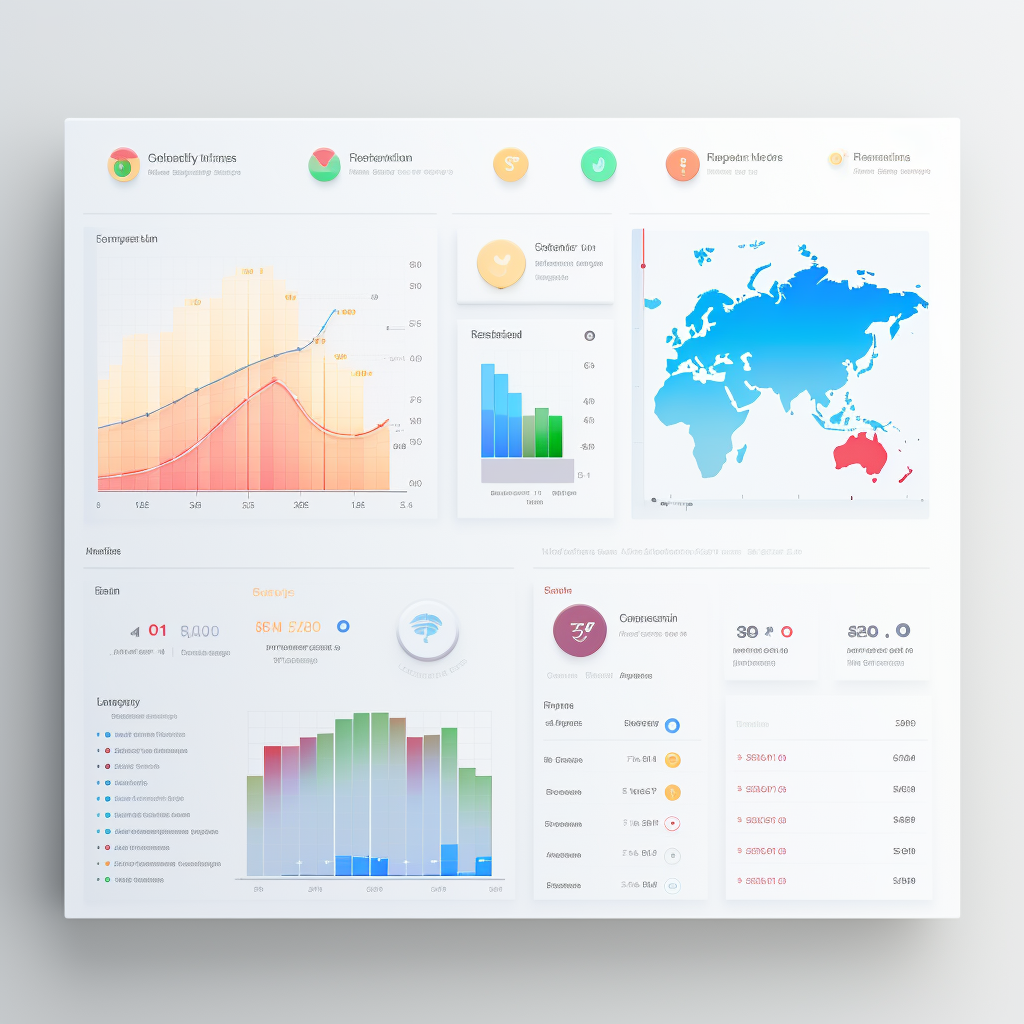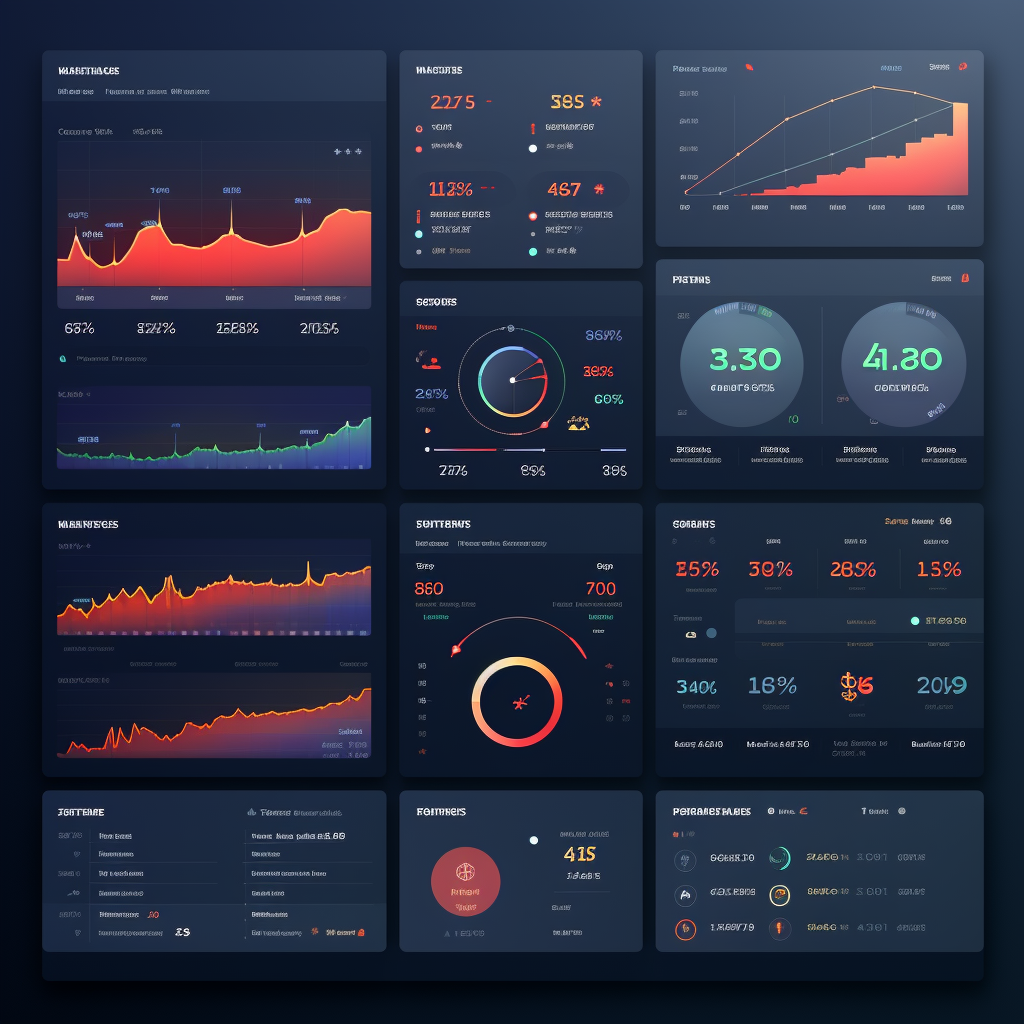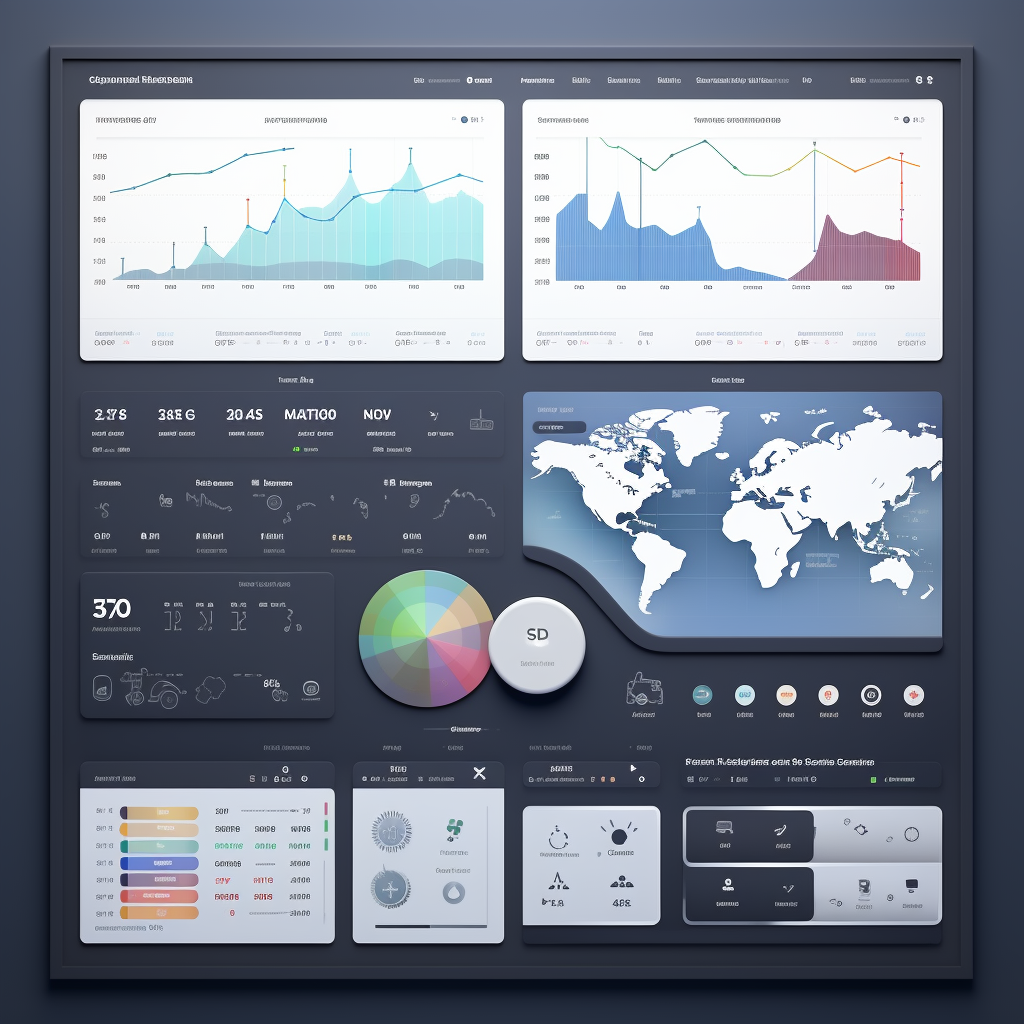
Curious about blog earnings? Learn ‘How Much Money Is a 1000 Views on a Blog?’ Join us on a journey to uncover the real monetary value of your blog’s viewership. In the ever-evolving landscape of online content creation, understanding the financial side of blogging is essential. Blogging isn’t just about sharing your thoughts and passions with the world; it’s also a platform where your dedication and creativity can yield substantial returns.
As you weave your narratives and engage your audience, it’s only natural to wonder about the potential income your blog could generate. This is where the question of the value of a thousand views comes into play, and we’re here to provide you with insights that can turn your curiosity into a strategy for financial success in the blogging sphere. So, let’s embark on this enlightening journey to demystify the earning potential of your blog’s viewership and learn how you can maximize its monetary value.
How Much Money Is a 1000 Views on a Blog? The Short Answer

The amount of money you can earn from a 1000 views on a blog can vary significantly based on several factors. It primarily depends on your blog’s niche, the advertising or monetization methods you employ, and the geographic location of your audience. Blogs in niches with high-paying advertisers, such as finance or technology, tend to earn more per thousand views than blogs in niches with lower advertising demand.
Additionally, utilizing premium ad networks, affiliate marketing, and selling digital products or services can increase your earnings. Moreover, the geographic location of your audience plays a role; traffic from regions with higher advertising rates typically generates more income. In general, it’s challenging to pinpoint an exact figure, but with effective monetization strategies and a sizable, engaged audience, you can turn a 1000 views into a meaningful stream of income.
Now that we’ve covered the fundamental factors influencing earnings per thousand views on a blog, let’s delve deeper into this intriguing topic. We’ll explore the various methods bloggers employ to monetize their content, examine real-world examples, and provide insights into maximizing your blog’s revenue potential. So, if you’re ready for an in-depth look at the world of blog earnings, let’s continue our exploration.
Blog Traffic Volume and Its Impact on Website Revenue

When it comes to understanding how much money 1000 views on a blog can bring in, one of the most influential factors is the volume of traffic your blog attracts. In essence, more eyeballs on your content often equate to greater earning potential. Advertisers and affiliate programs frequently base their payouts on the number of visitors your blog receives. Therefore, finding ways to boost your blog’s traffic, whether through effective SEO techniques, strategic social media marketing, or content promotion, can have a direct impact on your earnings.
Traffic Quantity and Earnings
In essence, more eyeballs on your content often equate to greater earning potential. Advertisers and affiliate programs frequently base their payouts on the number of visitors your blog receives. Therefore, finding ways to boost your blog’s traffic, whether through effective SEO techniques, strategic social media marketing, or content promotion, can have a direct impact on your earnings.
The Vital Role of Blog Audience Engagement

Beyond traffic quantity, audience engagement plays a pivotal role in determining your income. An engaged audience is more likely to click on ads, make purchases, and subscribe to your offerings. Factors such as fostering a loyal readership, maintaining an active comments section, and cultivating a robust social media presence can enhance engagement, thus potentially boosting your blog’s earnings..
The Power of Engagement
An engaged audience is more likely to click on ads, make purchases, and subscribe to your offerings. Factors such as fostering a loyal readership, maintaining an active comments section, and cultivating a robust social media presence can enhance engagement, thus potentially boosting your blog’s earnings.
Choosing the Right Niche and Crafting Relevant Content

The niche you select for your blog can significantly affect your earnings. Certain niches, such as finance or technology, often offer higher earning potential due to their valuable and competitive audiences. However, it’s not just about the niche itself; the relevance of your content to your target audience is equally crucial. Crafting high-quality, informative, and engaging content that caters to your readers’ interests is more likely to drive revenue through ad clicks, affiliate sales, or product purchases.
Niche Selection and Income Potential
Certain niches, such as finance or technology, often offer higher earning potential due to their valuable and competitive audiences. However, it’s not just about the niche itself; the relevance of your content to your target audience is equally crucial.
How Much Money Is a 1000 Views on a Blog? Exploring Monetization Methods

Your choice of monetization methods plays a crucial role in your blog’s earnings. Different methods offer varying income potential. For instance:
- Display Ads: Display advertising networks like Google AdSense can provide a steady stream of income, but the earnings per click (EPC) can vary widely.
- Affiliate Marketing: Promoting products or services through affiliate marketing can be highly lucrative, with commissions ranging from a few percent to substantial percentages of each sale.
- Sponsored Content: Working with brands and businesses on sponsored posts or partnerships can yield substantial income, especially if you have a sizable and engaged audience.
- Selling Digital Products: Creating and selling your digital products, such as ebooks, courses, or software, can lead to significant earnings, with profit margins often higher than other methods.
- Subscription Models: Offering premium content behind a paywall or membership site can provide recurring income, although it may require a dedicated and engaged audience.
Navigating Seasonal and Trend-Driven Opportunities when Blogging

Blog earnings can also be influenced by seasonal and trend-driven opportunities. For instance, if your blog covers topics related to holidays, events, or trending subjects, you might experience income fluctuations throughout the year. Being aware of these trends and strategically planning your content and promotions can help you maximize earnings during peak periods.
Maximizing Seasonal Opportunities: Riding the Income Waves
Blogging income isn’t always consistent; it can ebb and flow with the seasons and trends. Here’s how you can optimize your earnings by capitalizing on seasonal opportunities:
Identifying Seasonal Trends
First, you need to identify the seasonal trends that align with your blog’s niche. Whether it’s holiday-themed content, back-to-school guides, summer fashion trends, or coverage of major events, understanding your niche’s seasonal patterns is key.
Strategic Content Planning
Once you’ve identified these trends, it’s time to plan your content strategically. Here are some tips:
- Create a Content Calendar: Develop a content calendar that outlines when you’ll publish seasonal content. This ensures you’re well-prepared for each season and event.
- Diversify Your Content: Beyond blog posts, consider other content formats such as videos, infographics, or social media campaigns that can align with seasonal themes.
- Keyword Optimization: Perform keyword research specific to seasonal trends. Tailor your content around these keywords to increase visibility during relevant times.
Promotional Strategies
Promotion is crucial to maximize seasonal opportunities. Here are strategies to consider:
- Social Media Campaigns: Launch targeted social media campaigns aligned with the season. Leverage relevant hashtags and engage with your audience.
- Email Marketing: Send out newsletters and promotional emails related to seasonal content, products, or offers.
- Collaborations: Partner with other bloggers or influencers in your niche for joint seasonal promotions.
Monetization During Peak Seasons
During peak seasonal periods, you can implement specific monetization strategies:
- Holiday Gift Guides: Create comprehensive holiday gift guides that include affiliate links to products. As people shop for gifts, your affiliate earnings can increase.
- Seasonal Products: If you sell digital products or merchandise, consider creating seasonal offerings. For instance, if you run a food blog, you could release a special holiday recipe e-book.
- Adapt Your Ad Strategy: Adjust your ad placements and strategies to align with seasonal content. Advertisers may pay higher rates for holiday-related keywords.
Post-Season Evaluation
After each seasonal push, it’s essential to evaluate your efforts:
- Analyze Performance: Use analytics tools to measure the success of your seasonal content and promotions. What worked well, and what could be improved?
- Feedback and Adaptation: Consider seeking feedback from your audience to understand their preferences and expectations during specific seasons. Use this information to refine your approach for the next seasonal opportunity.
By strategically navigating the seasonal opportunities in your niche, you can ride the income waves and make the most of the varied earning potential that each season brings. Remember, successful seasonal monetization requires planning, adaptability, and a deep understanding of your audience’s seasonal behaviors and interests.
The Power of Income Diversification: Strengthening Your Blog’s Financial Resilience

Diversifying your income streams can be a smart move to mitigate risks and potentially increase your overall earnings. Relying solely on one monetization method, such as display ads, may limit your income potential. By exploring multiple avenues like affiliate marketing, sponsored content, and selling digital products, you can create a more resilient and profitable income model for your blog.
In essence, comprehending blog earnings involves a multifaceted approach that encompasses audience engagement, content quality, niche selection, and savvy monetization strategies. By consistently optimizing these aspects and staying attuned to your audience’s needs, you can work toward maximizing your blog’s earning potential.
The Benefits of Income Diversification
Diversification is a powerful strategy in the world of finance, and it holds true for bloggers aiming to maximize their income. Here’s a deep dive into why diversifying your income sources as a blogger is not just a smart move but also a way to strengthen your blog’s financial resilience.
Mitigating Risk
Diversifying your blog’s income sources is akin to spreading your investments across different assets in a financial portfolio. It helps mitigate the risk of overreliance on a single income stream. When your earnings are diversified, you’re less vulnerable to sudden fluctuations in one area. For example, if your primary income source is display advertising, changes in ad rates or policies could significantly impact your earnings. However, by incorporating various income streams like affiliate marketing, sponsored content, and selling digital products, you’re better protected against such fluctuations.
Unlocking Multiple Revenue Streams
Diversification opens up opportunities to tap into multiple revenue streams. Here are some common income sources bloggers can explore:
- Display Advertising: Earnings from ad networks like Google AdSense.
- Affiliate Marketing: Commissions earned by promoting products or services.
- Sponsored Content: Payments for collaborating with brands or businesses.
- Selling Digital Products: Revenue generated from selling ebooks, courses, or software.
- Subscription Models: Recurring income from premium content or membership programs.
Each of these income streams has its strengths and can cater to different aspects of your blog’s audience. By diversifying, you’re not limited to a single source of income, and you can maximize your overall earnings potential.
Stability in Revenue
Imagine relying solely on one income stream, such as display advertising. When ad rates fluctuate, your earnings can experience significant peaks and valleys. Diversification helps stabilize your revenue. While some income sources may have seasonal variations or depend on market conditions, others can provide a more consistent flow of income. This stability ensures that your blog can weather financial challenges more effectively.
Adapting to Market Changes
The digital landscape is dynamic, and what works exceptionally well today might not yield the same results tomorrow. Diversification equips you with the ability to adapt to market changes. If a particular income source becomes less profitable or competitive, you can shift your focus to others that are more promising. This adaptability ensures that your blog remains financially viable in the long run.
Scaling Your Earnings
Diversification not only protects your income but also enables you to scale your earnings. As you explore different income streams and refine your strategies, you can gradually increase your overall blog income. For example, if affiliate marketing is performing well, you can invest more time and effort in that area. This scalability empowers you to work towards your income goals more effectively.
Providing Value to Your Audience
Finally, diversification allows you to provide more value to your audience. By offering a variety of content and income sources, you cater to different preferences within your readership. Some readers might prefer ad-supported content, while others might be interested in premium offerings or affiliate-recommended products. Meeting these diverse needs not only enhances user experience but also fosters audience loyalty.
In essence, diversifying your blog’s income sources is a strategic move that offers numerous benefits. It safeguards your earnings, unlocks various revenue streams, ensures financial stability, and allows you to adapt to changing market conditions. By embracing diversification, you not only strengthen your blog’s financial resilience but also provide a richer and more engaging experience for your audience.
How Much Money Is a 1000 Views on a Blog? Maximizing Revenue

Maximizing blog revenue is the ultimate goal for many bloggers, and achieving this requires a strategic approach that encompasses various aspects of your blog. In this section, we’ll delve into effective strategies and tips to help you maximize your blog’s income potential.
Diversify Your Blog Income Streams
One of the most effective ways to boost blog revenue is to diversify your income streams. Relying solely on one method, such as display ads, can limit your earnings. Here are some income streams to consider:
- Display Ads: Display advertising, such as Google AdSense, remains a reliable source of income for many bloggers. Optimize ad placements and experiment with different ad networks to find the most profitable combination.
- Affiliate Marketing: Partnering with affiliate programs can be highly lucrative. Promote products or services relevant to your niche and audience, and strategically incorporate affiliate links into your content.
- Sponsored Content: Collaborating with brands and businesses on sponsored posts or partnerships can lead to significant earnings. Ensure that sponsored content aligns with your blog’s niche and provides value to your readers.
- Digital Products: Create and sell your digital products, such as ebooks, online courses, printables, or software. These products often yield higher profit margins compared to advertising.
- Subscription Models: Consider offering premium content or services behind a paywall or membership site. Subscriptions can provide a reliable source of recurring income.
- Consulting and Coaching: If you’re an expert in your niche, offer consulting or coaching services to your readers. Personalized guidance can command premium rates.
- Freelancing or Services: If your blog showcases your skills, such as writing, design, or programming, leverage your blog to attract clients for freelance work or services.
Diversifying your income streams not only increases your revenue potential but also provides stability by reducing dependence on a single source.
Optimize Your Blog for SEO: Driving Earnings through Organic Growth

Search engine optimization (SEO) is not just a buzzword; it’s a powerful tool that can significantly impact your blog’s earnings. By understanding its nuances and implementing effective strategies, you can harness the potential of organic traffic to boost your revenue.
Keyword Research and Optimization
Keyword research is the foundation of a successful SEO strategy. Start by identifying relevant, high-traffic keywords in your niche. These are the phrases your potential readers are typing into search engines. By optimizing your content around these keywords, you increase your chances of ranking higher in search results.
But SEO isn’t just about stuffing your articles with keywords. It’s about crafting valuable, informative, and engaging content that naturally incorporates these keywords. When done right, your content becomes not only search engine-friendly but also reader-friendly.
Attracting Organic Traffic
Once your content is optimized for SEO, it becomes more discoverable. When people search for topics related to your niche, your blog is more likely to appear in search results. This visibility translates to increased organic traffic. The beauty of organic traffic is that it’s highly targeted. These visitors are actively searching for information or solutions related to your niche, making them more likely to engage with your content and your monetization methods.
Unlocking Multiple Monetization Opportunities
Higher organic traffic opens the door to various monetization opportunities. Here are some ways it can impact your earnings:
- Display Advertising: More traffic often leads to higher ad revenue. Advertisers pay based on the number of views or clicks their ads receive. With increased organic traffic, your ad earnings can see a noticeable boost.
- Affiliate Marketing: A larger audience means more potential customers for affiliate products or services you promote. You can earn commissions for each sale or action taken through your affiliate links.
- Sponsored Content: Brands are more likely to partner with blogs that have a substantial readership. With increased organic traffic, you become an attractive prospect for sponsored content collaborations.
- Selling Digital Products: If you sell ebooks, courses, or other digital products, higher traffic means a broader pool of potential buyers.
- Subscription Models: Premium content behind a paywall becomes more enticing when you have a substantial organic readership.
Building Long-Term Authority
Effective SEO doesn’t just drive short-term gains; it builds long-term authority for your blog. When your content consistently ranks well in search results, readers perceive you as a reliable source of information. This trust can lead to recurring visitors and a loyal readership, which, in turn, can sustain and grow your earnings over time.
Continuous Optimization
SEO is not a one-time task but an ongoing process. As you create new content and update existing articles, you can apply your SEO knowledge to each piece. Over time, this continuous optimization can compound the benefits, gradually increasing your blog’s earnings potential.
In conclusion, optimizing your blog for SEO isn’t just about attracting more visitors; it’s about driving targeted organic traffic that can significantly impact your earnings. Through keyword research, content optimization, and a commitment to providing value to your readers, you can unlock the true potential of your blog and turn it into a profitable venture.
Blog Audience Engagement and Loyalty

Building a loyal and engaged audience is a long-term strategy that can significantly impact your revenue. Engaged readers are more likely to click on ads, purchase products, and become subscribers or members. Here are some tips to foster audience engagement:
- Respond to comments and engage with your readers in the comments section.
- Encourage feedback and discussions on your blog.
- Maintain an active presence on social media platforms to interact with your audience.
- Create personalized content that resonates with your readers and addresses their needs and interests.
- Offer valuable resources, such as guides, ebooks, or webinars, exclusively to your subscribers or members.
Data Analytics and Tracking: The Power of Informed Decision-Making

In the fast-paced world of blogging, knowledge is not just power; it’s profit. Data analytics and tracking are your lenses into the inner workings of your blog. They provide the insights needed for strategic decisions that can significantly impact your earnings.
Understanding Key Metrics
When you embark on the journey of monetizing your blog, you enter a realm where numbers tell a story. These are some of the key metrics you should keep a close eye on:
- Traffic: The number of visitors your blog receives is a fundamental metric. It not only reflects your blog’s popularity but also serves as the foundation for many other metrics.
- User Behavior: Understanding how users interact with your blog is essential. Which pages are they visiting the most? How long are they staying on your site? Are they bouncing off quickly or exploring multiple pages? These insights help you tailor your content and user experience.
- Conversion Rates: If your blog offers products, services, or subscriptions, conversion rates are crucial. This metric tells you how effective your blog is at turning visitors into customers or subscribers.
- Revenue Sources: Track where your earnings are coming from. Is it primarily from display ads, affiliate marketing, sponsored content, or other sources? This breakdown can guide your monetization strategy.
Identifying High-Performing Content
Data analytics unveil the content that resonates most with your audience. By identifying your top-performing articles, you can double down on what works. This might mean creating more content on similar topics or optimizing existing posts to boost their performance.
You can also discover content gaps. Are there topics or sub-niches within your niche that your audience is hungry for but you haven’t covered yet? Identifying these opportunities can lead to new avenues for revenue generation.
Testing and Optimization
Data analytics provide the empirical evidence needed for A/B testing and optimization. For example, if you’re running display ads, you can test different ad placements, sizes, or networks to see which yields the highest earnings per thousand impressions (eCPM). Similarly, in affiliate marketing, you can experiment with different products or promotional strategies.
Your blog isn’t static; it’s an evolving entity. By constantly testing and optimizing based on data-driven insights, you can fine-tune your strategies and steadily increase your earnings.
Adapting to Changing Trends
The blogosphere is not immune to trends and shifts. Topics, search engine algorithms, and audience preferences can change. Data analytics allow you to detect these shifts early on. For example, if a new keyword or topic starts gaining traction in your niche, you can swiftly pivot your content strategy to capitalize on it.
Tools and Resources
To harness the power of data analytics, you’ll need the right tools and resources. Fortunately, there are various analytics platforms and plugins designed specifically for bloggers. Google Analytics, for instance, provides a wealth of data about your blog’s performance. Many website hosting services also offer built-in analytics.
In conclusion, data analytics and tracking are your compass in the blogging landscape. They empower you to make informed decisions, optimize your content and strategies, and adapt to changing trends. By embracing the insights offered by data, you can unlock the full earning potential of your blog and navigate the path to profitability with confidence.
Conclusion: Turning Views into Earnings

So, how much money is a 1000 views on a blog worth? The answer is as varied as the blogs themselves. Your earnings depend on factors like your niche, CPM rates, and the effectiveness of your monetization strategies.
Remember that blogging is not just about making money. It’s also about sharing your passion, knowledge, and expertise with the world. Focus on creating valuable content, building an audience, and experimenting with different income sources to turn your blog into a sustainable income stream.
If you’re dedicated, patient, and willing to adapt to the ever-changing blogging landscape, those thousand views can evolve into a significant source of revenue. Keep learning, keep writing, and keep earning.
FAQs: Answering Your Blog Earnings Questions
1. Can I make a full-time income from my blog?
Yes, many bloggers earn a full-time income from their blogs. However, it often takes time, dedication, and effective monetization strategies to reach that point.
2. Are there specific niches that earn more money?
Certain niches, like finance, health, and technology, tend to have higher earning potential due to valuable and competitive audiences.
3. Is it necessary to have a large audience to make money from blogging?
While a larger audience can certainly boost your income potential, it’s not the only factor. High-quality content, effective monetization strategies, and audience engagement also play significant roles.
4. How long does it take to start earning money from a blog?
The timeline for earning money from a blog varies widely. Some bloggers see income within a few months, while others may take a year or more. Consistency and persistence are key.
5. What’s the most important aspect of monetizing a blog?
Creating valuable and engaging content is the foundation of successful blog monetization. Without content that resonates with your audience, monetization efforts may fall short.
Whether you’re just starting your blogging journey or looking to increase your earnings, remember that blogging is both an art and a science. By continually improving your content and monetization strategies, you can turn your passion for writing into a rewarding source of income.
Keep writing, keep experimenting, and keep growing your blog – those thousand views might just be the beginning of your blogging success story.
Related Articles You Might Find Interesting:
- How to Write a Blog for Money
- How do bloggers get paid?
- Can you make $1,000 a month with a blog?
- How much money is a 1000 views on a blog?
- How to make $500 dollars a month blogging?
- How long does it take to make $1000 per month blogging?
- How to earn $10,000 per month from blogging?
- Do beginner bloggers make money?
- How much do beginner bloggers make?